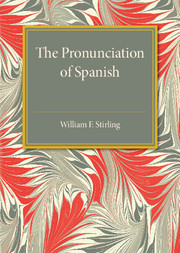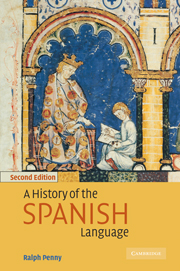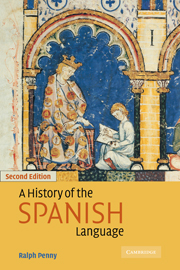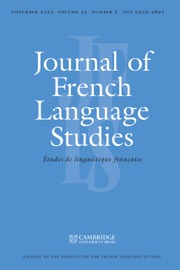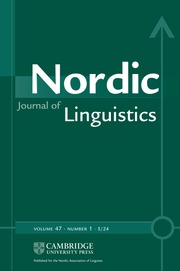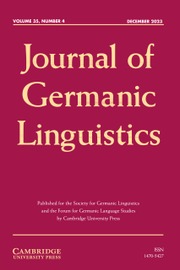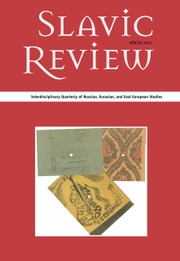The History of Spanish
This concise textbook provides students with an engaging and thorough overview of the history of Spanish and its development from Latin. Presupposing no prior knowledge of Latin or linguistics, students are provided with the background necessary to understand the history of Spanish. Short, easy-to-digest chapters feature numerous practice exercises and activities. Chapter 'Lead-in' questions draw comparisons between English and Spanish, enabling students to use their intuition about their native language to gain a deeper understanding of Spanish. Each chapter features further reading suggestions, an outline, and a summary. Highlighted key terms are collated in a glossary. Boxes on linguistic debates teach students to evaluate arguments and think critically about linguistics. Supporting online resources include Word files of all the practices and activities in the book and an instructor's manual featuring a sample syllabus, answer key to the practices and activities, sample exams and teaching suggestions. This book is ideal for a range of courses on the history of Spanish and Spanish linguistics.
- A concise, engaging and thorough overview of the history of Spanish and its development from Latin, presupposing no prior knowledge of Latin or linguistics
- Numerous practice exercises and activities offer extensive opportunities for student practice
- Features include: chapter 'Lead-in' questions, drawing comparisons between English and Spanish and boxes on linguistic debates that teach students to think critically about linguistics, and supplementary online resources
Reviews & endorsements
'An accessible and illuminating introduction to the fascinating history of the Spanish language over the last two thousand years.' Roger Wright, University of Liverpool
'Takes vast and complex material and presents it in a reader-friendly, manageable, and engaging way, to create a welcome addition to the resources that instructors and students of Spanish historical linguistics have at their disposal.' Natalya I. Stolova, Colgate University, New York
'Exploits students' natural curiosity and explains what are often quite difficult concepts and complex data in a direct, user-friendly way. There is no other teaching resource for the history of the Spanish language quite like this.' Chris Pountain, Queen Mary University of London
'With references throughout to contemporary language and the everyday learning experience (both in Spanish and English) of its target student audience, as well as just the right amount of content, this book seems likely to inspire students of (historical) linguistics for generations to come …' Felix Tacke, Romanische Forschungen
'… students like it. This is perhaps the most significant endorsement of all. If those of us who work in historical linguistics want to convey the value of knowing the language's antecedents and draw in a future generation of scholars to our discipline, Ranson and Lubbers Quesada's book is a great way to start.' Cynthia Kauffeld, Studies in Hispanic and Lusophone Linguistics
'an excellent textbook for an introductory course on the history of the Spanish language. The breadth of topics covered, presented in an engaging, easy-to-read style, and the inclusion of a wide-range of thought-provoking activities make it an invaluable resource for students and instructors alike.' Sonia Kania, La corónica: A Journal of Medieval Hispanic Languages, Literatures, and Cultures
Product details
October 2018Hardback
9781107144729
452 pages
253 × 178 × 25 mm
1.05kg
34 b/w illus.
Available
Table of Contents
- List of figures
- List of maps
- List of tables
- Preface for students
- Preface for instructors
- Acknowledgments
- 1. Why do Spanish speakers say el arte but las artes? The value of studying the history of Spanish
- 2. Is it wrong to say cantastes instead of cantaste? A linguist's attitude and approach to language
- 3. How and why do languages change and how do linguists know?
- 4. Did /f/ change to /h/ in Spanish because of Basque? Four moments of language contact in the history of Spanish
- 5. Why is Spanish also called Castilian? The standardization process and its effects
- 6. How did FESTA become fiesta but FESTÎVUM became festivo? Regular vowel changes
- 7. How did ACÛTUM become agudo? Regular consonant changes
- 8. Why is 'milk' leche but 'Milky Way' is Via Láctea? Special tonic vowel changes
- 9. Why fieldad but lealtad? Special consonant changes
- 10. Why do Spanish speakers sometimes say andé instead of anduve? Morphological changes
- 11. Why is mano feminine and día masculine? Changes in case, declension, number, and gender
- 12. Why do Spanish speakers sometimes say más malo instead of peor? Origins of nominal elements
- 13. Why are there so many verb tenses in Spanish? Origins of verbs
- 14. Why is comeré the future of comer but sabré is the future of saber? How regular sound change and analogy lead to regular and irregular forms
- 15. Do you say veo el gato or veo al gato? Syntactic changes
- 16. How did MÛSCŬLUM 'little mouse' become Spanish muslo 'thigh'? Semantic changes
- 17. Why perro 'dog' instead of can? Lexical changes
- Appendix: Selections from old Spanish texts
- El Auto de los Reyes Magos
- Cantar de mio Cid
- Razon feita d'amor
- Milagros de Nuestra Señora
- Calila e Dimna
- Glossary of terms
- Works cited
- Word index
- Subject index.


